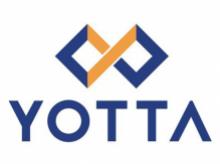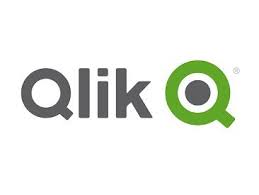Web Application Firewall Market: A Deep Dive into the $25.6 Billion Projection by 2030
According
to the report, the global web application firewall industry generated $3.9
billion in 2020, and is expected to reach $25.6 billion by 2030, witnessing a
CAGR of 20.8% from 2021 to 2030.
A
Web Application Firewall (WAF) is crafted to elevate the security level of HTTP
or web conversations. Typically, it adheres to a set of protocols to detect and
prevent threats that pose risks to a system. Its role extends to managing and
overseeing network traffic within web-enabled applications. This firewall acts
as a secure barrier, shielding a system from potential external threats.
Positioned at
the application layer of the Open Systems Interconnection model, it offers web
protection against a variety of attack types including XSS, SQL injection,
cross-site scripting, DT, and RFI. The significant driving forces behind the
growth of the web application firewall market encompass the expanding
demand for cloud-based solutions and the enforcement of rigorous industry
standards and regulations.
Surge
in demand for cloud-based solutions, increase in number of cyber-attacks,
stringent industry standards & regulatory compliance, and rise in
application areas drive the growth of the global web application firewall
market. However, scarcity of trained professionals restrains the market growth.
Contrarily, advanced protection capabilities of web application firewalls over
next-generation network firewall (NGFW) and intrusion prevention systems (IPS)
create new opportunities in the coming years.
Covid-19 Scenario:
•
Owing to the adoption of a work-from-home culture and remote working practices
during the Covid-19 pandemic, the demand for web application firewalls
increased considerably to ensure endpoint security and protect against data
breaches.
• In addition,
there has been a scarcity of resources for security teams within the
enterprises to address different security issues. This, in turn, raised the
demand for web application firewall solutions.
• Data center services, cloud computing providers, and other online support
providers availed various benefits of web application firewall during the
pandemic.
Based
on deployment, the on-premise segment dominated the web application firewall
market and is expected to maintain its dominance in the upcoming years. This is
attributed to factors such as lack of additional capital for procurement of
essential hardware and software and high cost of the on-premises security
deployment model compared to the cloud-based model have created hurdles in the
growth of this model. In addition, the impact of increased threat from advanced
cyber-attacks such as Ransomware have increased the adoption of the market
among large enterprises.
On-premises
deployment mode is most prevalent with large enterprises as it involves
significant investments to implement and organizations need to purchase
interconnected hardware, servers, and software to manage the system. This model
is appropriate for specific applications such as financial and health records
with critical data that entails large data transfers and operations. However,
the origination of cloud computing has reduced cost constraints for most
enterprises, which makes latter the most preferred choice of deployment.
Based
on organization size, the large enterprises segment is the fastest-growing
segment of WAF market and is projected to keep its hold on the web application
firewall market size in the next years. Moreover, the incorporation of overall
security for IT assets requires network as well as application security and WAF
security. The need to safeguard data and rise in awareness regarding security
events boost the growth of the market across large enterprises. Key factors
such as ease of deployment, presence of sandboxing technologies, and advanced
detection capabilities increase the adoption of WAF Firewalls among large
enterprises. Further, the advantages of WAF Firewall over next-generation
network firewall (NGFW) and intrusion prevention systems (IPS) to offer
advanced protection capabilities for internal business-critical applications,
internet-facing websites, and web services is expected to drive the market
growth during the web application firewall market forecast period.
Based
on industry vertical, the BFSI segment held the highest market share in 2020,
holding more than one-fourth of the global web application firewall industry,
and is projected to maintain its leadership status during the forecast period.
This is attributed to increase in customer base and rise in adoption of online
banking services. However, the manufacturing segment is expected to manifest
the fastest CAGR of 24.7% from 2021 to 2030.
Based
on region, North America contributed the highest market share in terms of
revenue in 2020, holding nearly two-fifths of the global web application
firewall market, and is expected to maintain its dominance by 2030. This is
attributed to an increase in investments in the defense sector and technological
advancements in the telecommunication industry. However, Asia-Pacific is
estimated to register the fastest CAGR of 22.3% during the forecast period,
owing to rise in investments in web application firewall solutions among
countries such as China, Japan, Thailand, India, and Indonesia.
Asia-Pacific
is expected to observe the highest growth rate during the forecast period. An
increase in investments for web application firewall solutions among countries
such as China, Japan, Thailand, India, and Indonesia fuels the growth of the
market. Moreover, Asia-Pacific is expected to be the fastest-growing regional
segment during the forecast period, with the highest CAGR. Government has
implemented supportive growth strategies to enhance security. Leading players
focus on Asia-Pacific to increase their business as the region is expected to
witness high growth in the deployment of web application security solutions,
especially in the banking, financial services, and insurance (BFSI) sector.
Moreover,
web application providers for distance learning, teleconferencing, online
gaming, healthcare, e-commerce, and entertainment have observed an upsurge in
usage as well as boost in revenue. Hence, there is rise in need for such
applications to improve their security capabilities. Aforementioned factors
boosted the growth of the web application firewall market.


































Leave A Comment